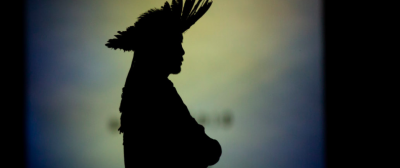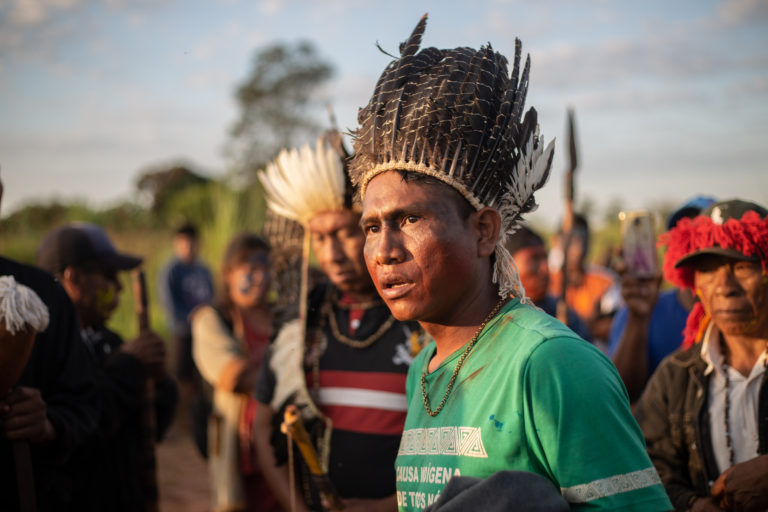Violence Against Indigenous Peoples Explodes in Brazil

On the same day that President Jair Bolsonaro made his anti-indigenous speech at the U.N. General Assembly in New York, Brazil’s Indigenous Missionary Council (CIMI) released its annual report, “Violence Against Indigenous Peoples in Brazil.” The data collected are from 2018, but the report also includes preliminary information for 2019, and the findings are alarming.
In the first nine months of the Bolsonaro government, which took office at the start of 2019, there have already been reports of 160 cases of land invasion, illegal exploitation of natural resources, and damage to property in 153 indigenous territories. This is a significant increase from 2018, both in number and scope: according to CIMI’s report, 111 incidents of this type were reported in 76 indigenous territories last year. With 2019 not yet over, the total area that has come under attack is already double last year’s.
The report does not include homicide data for 2019, but reveals that 135 indigenous people were murdered in 2018 — an increase of almost 23 percent from 2017, when 110 indigenous people were murdered. The state of Roraima stands out as the most violent, with 62 homicides, followed by Mato Grosso do Sul, with 38. Combined with data provided by Sesai (the Special Indigenous Health Secretariat) and state health departments, CIMI recorded violent deaths of indigenous peoples in 12 Brazilian states.
“This is the result of the policy of genocide initiated under the Temer government, with stripping of agencies that provide assistance and protection, like INCRA and Funai, emphasizing the idea that indigenous territories should be exploited,” said Roberto Liebgott, CIMI’s southern region coordinator and one of those responsible for producing the report.
According to Liebgott, Bolsonaro’s statement as presidential candidate that “not a centimeter will be demarcated either as an indigenous reserve or as a quilombola” — land owned by descendants of runaway slaves — was the “trigger that authorized a criminal state, allowing that land to be pillaged for the benefit of the sectors who elected him.”
CIMI’s report also draws attention to other cases of deaths resulting from state negligence, including suicides and infant mortality. In 2018, 101 indigenous people took their own lives in Brazil, 44 of them in Mato Grosso do Sul.
“The situation there clearly reflects a failed model. Far from their native lands, confined to overpopulated reserves or on the sides of big motorways, faced with extreme vulnerability, isolation and lack of opportunities, many opt to take their own lives, often by hanging themselves,” Liebgott said.
The infant mortality rate is also high. Last year, according to data collected by Sesai, 591 indigenous children aged five and below died as a result of state negligence. Almost 40 percent (219 children) lived in the state of Amazonas, which has the highest infant mortality rate in the country. According to Sesai, deaths in infancy are directly linked to a lack of medical assistance, which is even more urgent in the areas of extreme vulnerability where many indigenous peoples live. It is common for many villages to lack basic sanitation and even access to clean drinking water.

Guarani Kaiowá indigenous people in the Guapo’y Guasu community, in the Dourados Amambai Peguá Indigenous Reserve, in Mato Grosso do Sul. Image by Tiago Miotto/CIMI.
Return to the past
CIMI’s report also features details of other forms of violence carried out against indigenous peoples, including deforestation, gold and diamond mining, the contamination of rivers, illegal hunting and fishing, the opening of drug-trafficking routes, and even the systematic implementation of burning in forest areas.
“Before, the invaders would take the wood and leave. Now they take the wood and set the rest on fire. They destroy everything. The only thing left is ashes. The state, whose job it is to protect, endorses this destruction, supported by the bancadas ruralistas [the Ruralist Block in Congress] and evangelicals,” Liebgott said.
The increase in the illegal practice of dividing indigenous land into lots and selling it, especially in the northern region, is concerning. The indigenous lands of the Arariboia (in Maranhão state), Karipuna and Uru Eu Wau Wau (both in Rondônia) are some examples of ancestral territories that have been divided up by land grabbers with the criminal intent to sell them. Another serious case of violation of the original rights of indigenous peoples is that of the lands of the Munduruku (in Pará state), where it is estimated that more than 500 miners have now settled.
“It is the worst it has been since the redemocratization of Brazil. The attitude now is to return to the past, to the end of the 1970s, when megaprojects in indigenous territories — construction of motorways, hydroelectric dams and mines — were very damaging to the lives of indigenous peoples,” Liebgott said.
“Over the past few years, indigenous peoples, by demanding the demarcation of their territories, have become the target for attacks,” the report says. This has not only been reinforced in the rhetoric of officials opposed to the demarcation of indigenous lands, including Bolsonaro, but has also driven repeated invasions of these traditionally occupied areas. CIMI reports that out of the 1,290 indigenous lands that have been claimed in Brazil, 821 (63 percent of the total) are still pending finalization of the demarcation process. Of these, 528 have not seen any measures at all taken by the state.
“If we get too caught up on Bolsonaro, we will lose hope,” Liebgott said. “We need to remember that he is not the government, he is not able to do everything. Bolsonaro is part of an idiotic, fascist, hypocritical and dishonest government that invents data and twists reality. However, the rights acquired by indigenous peoples must be maintained. It is fundamental that international bodies ask the Brazilian government to take measures to stop this barbarity from taking place and that those responsible be punished.”
Dom Roque Paloschi, the CIMI president and archbishop of Porto Velho in Rondônia state, said “violence against indigenous peoples has become an institutionalized disease” in Brazil. In his introduction to the report, he painted a very grim picture for the future of these communities:
“If this predatory cycle of global dimensions is not contained, their forests will be destroyed, and their lands will be divided and subjected to indiscriminate exploitation. After the fences have been put up, the indigenous peoples that remain will be left, like those in the South, at the edges of farms and on the sides of roads; or will have to abandon their traditional ways of life and become manual laborers at the service of the accumulation of capital”.
*
Note to readers: please click the share buttons above or below. Forward this article to your email lists. Crosspost on your blog site, internet forums. etc.
This article was first published by Mongabay Brasil.
Featured image: Guarani Kaiowá indigenous people in the Guapo’y Guasu community, in the Dourados Amambai Peguá Indigenous Reserve, Mato Grosso do Sul, by Tiago Miotto/CIMI.

